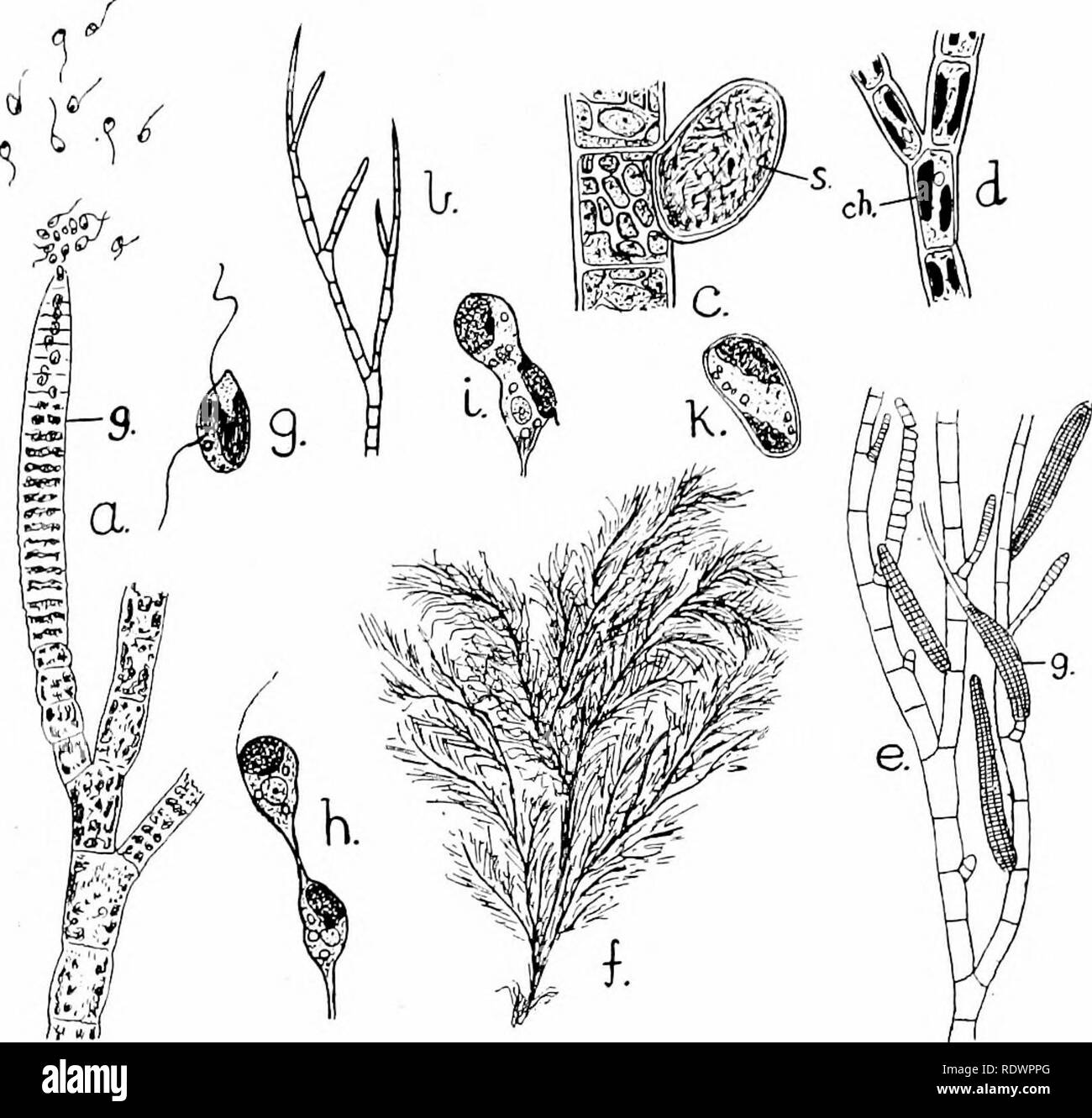. An introduction to the structure and reproduction of plants. Plant anatomy; Plants. ZOOSPORES 219 cilia, one directed forwards and the other backwards during movement, and these are attached to one side adjacent to the chloroplast and the prominent eye-spot (Fig, 119, g). The production of zoospores serves as a rapid means of. Fig. 119.—Ectocarpus, a, small part of a thread showing a gametangium (g.), liberating gametes ; b, tip of a branch showing hair-like termi- nations ; c, small part of a thread bearing a zoosporangium (s.) ; d, part of thread showing cell-contents and chloroplasts (ch.

Image details
Contributor:
The Book Worm / Alamy Stock PhotoImage ID:
RDWPPGFile size:
7.2 MB (338.9 KB Compressed download)Releases:
Model - no | Property - noDo I need a release?Dimensions:
1618 x 1545 px | 27.4 x 26.2 cm | 10.8 x 10.3 inches | 150dpiMore information:
This image is a public domain image, which means either that copyright has expired in the image or the copyright holder has waived their copyright. Alamy charges you a fee for access to the high resolution copy of the image.
This image could have imperfections as it’s either historical or reportage.
. An introduction to the structure and reproduction of plants. Plant anatomy; Plants. ZOOSPORES 219 cilia, one directed forwards and the other backwards during movement, and these are attached to one side adjacent to the chloroplast and the prominent eye-spot (Fig, 119, g). The production of zoospores serves as a rapid means of. Fig. 119.—Ectocarpus, a, small part of a thread showing a gametangium (g.), liberating gametes ; b, tip of a branch showing hair-like termi- nations ; c, small part of a thread bearing a zoosporangium (s.) ; d, part of thread showing cell-contents and chloroplasts (ch.) ; e, branched filament bearing several gametangia (g.) ; /, plant of E. littoralis, natural size ; g, zoospore ; h and i, stages in fusion of gametes ; k, zygospore, still showing two chloroplasts and two eye- spots, (a, after Thuret; h and d-/after Migula; c and g after Reinke; h~h after Berthold.) multiplication and dispersal at times when vegetative activity is at its height, but this method lacks the stimulus which sexual fusion appears to provide. As a matter of fact continued asexUqil j, eproduction has, in certain cases {e.g. some Diatoms), . Please note that these images are extracted from scanned page images that may have been digitally enhanced for readability - coloration and appearance of these illustrations may not perfectly resemble the original work.. Fritsch, Felix Eugene, 1879-; Salisbury, E. J. (Edward James), Sir, b. 1886. London, G. Bell and sons ltd.